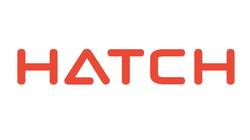Mining industry looks to operational modelling to slash costs
| Mining industry looks to operational modelling to slash costs | 17.44 KB | Download | |
| A schematic of a coal supply chain. | 1.2 MB | Download | |
| Hatch developed a patented system for bulk handling of iron ore at Port Hedland in Western Australia. | 2.46 MB | Download | |
| Rüdiger von Varendorff, Australia-Asia lead, operational performance analytics, Hatch. | 1.69 MB | Download |
Operational modelling or dynamic simulation is therefore essential to assist in the decision-making process in this new business milieu. “Traditionally mining houses would have had a business improvement group to manage their own internal project pipeline, with some external consultants brought on-board for change management in terms of looking at any bottlenecks, for example,” Rüdiger von Varendorff, Australia-Asia lead, operational performance analytics at Hatch, comments.
Using its unique operational modelling approach, Hatch is able to assist its clients in unlocking value in their existing operations by ensuring design capability, capital effectiveness and operational efficiency of the integrated production chain.
“The South African mining industry is looking to mechanise. However, you first have to adopt best practice in terms of the mining operation itself, as well as putting the necessary systems in place to sustain that,” von Varendorff elaborates.
A major mining house called in the expertise of Hatch to determine how to up its output from 170 mtpa to 190 mtpa – without any additional capital cost, simply by unlocking the latent capacity in the supply chain.
Assisting another client in the gold-mining sector, Hatch was able to effect a 25 percent increase in throughput, also without any additional capital. “The key to these significant achievements is that they were realised in close co-operation with the client itself, tapping into the company’s own knowledge base,” von Varendorff stresses.
“At the end of the day, the main driver for operational modelling is to drive down costs, as part of a continuous business improvement approach. The key thing to remember is that it is not just about plugging in some costly software program that then produces immediate results. It is all about adjusting and optimising your existing operations by learning the value of doings things differently – where necessary.”
Von Varendorff stresses the importance of companies engaging an expert like Hatch that can apply operational modelling or dynamic simulation to their supply chain or production process in a holistic fashion in order to generate maximum cost-effectiveness and efficiency.
A typical example is a coal operation using simulation to determine the ideal size of its coal stockpile. “This is the wrong kind of question to ask,” von Varendorff asserts. “Why do you require a stockpile? What is its purpose and how does it fit into your overall business strategy? Are you going to utilise that stockpile to blend coal, or to mitigate against the impact of seasonal rainfall? These are the sorts of scenarios that operational modelling is best suited to assist with,” von Varendorff points out.
“From underground operations to open-cast mines, if you want to improve productivity without spending large amounts of capital, you have got to do things differently. This inevitably means you have to change the way you make business and operating decisions. The mining industry is steeped in fairly traditional business practices. It cannot just keep on doing things the way it has always done,” he concludes.
Ends
Notes to the editor
To download hi-res images for this release, please visit http://media.ngage.co.za and click the Hatch Goba link to view the company’s press office in the NGAGE Media Zone.
About Hatch Goba
Hatch Goba supplies process and business consulting, information technology, engineering, procurement and project and construction management and operational services to the mining, metallurgical, energy and infrastructure industries.
Media Contact
Gerhard Hope
NGAGE Public Relations
Phone: (011) 867-7763
Fax: 086 512 3352
Cell: 078 824 8723
Email: gerhard [at] ngage [dot] co [dot] za
Web: www.ngage.co.za
Browse the NGAGE Media Zone for more client press releases and photographs at http://media.ngage.co.za

